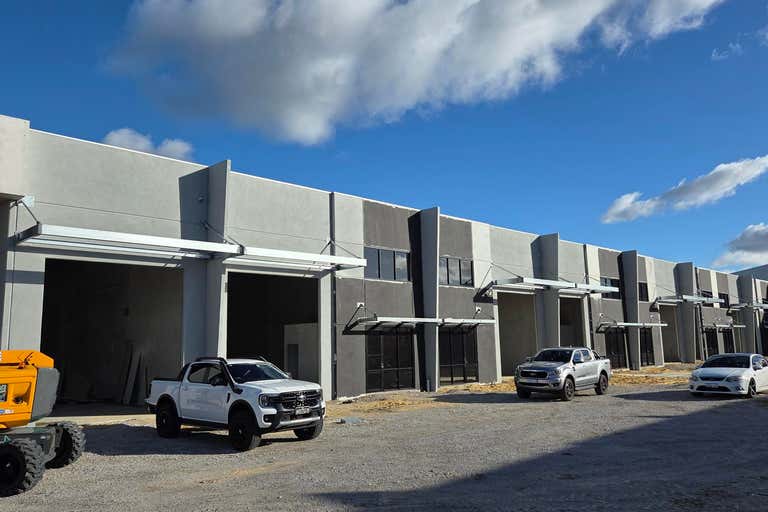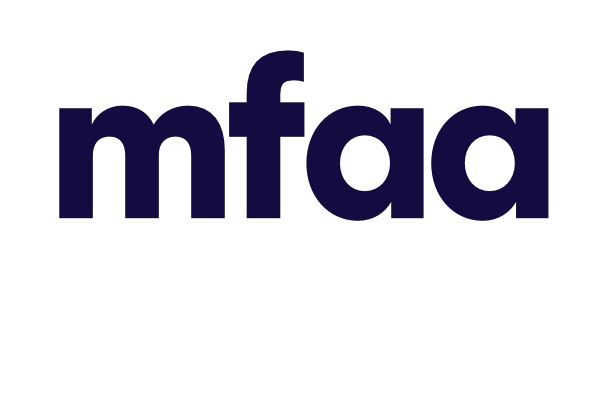Home » Commercial Property Loans | 60%-90% LVR | Specialist Commercial Brokers | Smart Business Plans » Commercial Property Loan Refinance | Lower Rates & Better Terms | Refinancing in 30 Days | Smart Business Plans
Slash Your Repayments with commercial property Loan refinance Options from 5.90%
Explore commercial property loan refinance options to unlock better rates, improve cash flow, and access equity. We help you secure optimal rates & terms from over 60+ lenders. Access up to 80-85% LVR with rates from 5.90%.

Commercial Property Loan Refinance Options - Quick Overview (Updated 08 January 2026)
Refinance Rates
- Interest Rates: 5.90% - 9.30% p.a.
- Max LVR: Up to 80% (cash-out available)
- Average Savings: $30,000+ annually
- Break Costs: We negotiate waivers
Refinance Options
- Rate Reduction: Lower your current rate
- Cash-Out: Access up to $100M+ equity
- Debt Consolidation: Combine multiple loans
- Term Extension: Extend up to 1 - 30 years
Process & Timeline
- Assessment: Free refinance analysis
- Lender Comparison: 60+ lenders assessed
- Approval Speed: 7-32 days indicative
- Settlement: 7-32 days typically
Your Commercial Property Loan Refinance Options
It makes sense to refinance your commercial property when doing so allows you to reduce repayments, access equity, or optimise your existing loan structure. With refinancing options up to 85% LVR including cash-out, you can lower your rate, unlock capital for growth, or consolidate multiple facilities while saving an average client tens or hundreds of thousands of dollars annually.
After helping refinance hundreds of commercial properties across Australia, best time to refinance is when:
- Rates have dropped below your current loan by 0.5% or more
- Your property has increased in value creating accessible equity
- Multiple loans are costing you time and money to manage
Book a free 30 min consultation to calculate your potential savings and see what rates you qualify for today.
Commercial Property Loan Refinance Strategies

We arrange commercial refinancing from $500K to $100M+, whether you’re refinancing offices, warehouses, retail properties, or entire portfolios.
- Major banks – Lowest rates for quality properties with strong serviceability
- Second-tier banks – Better flexibility on cash-out and consolidation
- Non-bank lenders – Fast settlements when timing matters
- Private funders – Solutions for complex refinancing banks won’t consider

Nadine Connell
Commercial Finance Broker
Refinancing Solutions That Match Your Goals
Lower Rates • Access Equity • Optimise Cash Flow
Rate Reduction Refinance
Potentially save thousands per month
- Drop to 5.90%+
- Lower monthly repayments
- Keep existing loan structure
- Best for: High-rate loans
Cash-Out Refinancing
Access up to 80% LVR
- Release $500K-$5M equity
- Fund expansion or renovations
- Buy additional properties
- Best for: Properties with increased value
Debt Consolidation
Combine multiple loans
- Single monthly payment
- Better overall rate
- Simplified management
- Best for: Multiple property portfolios
Switch to Interest-Only
Reduce payments 30-40%
- Improve immediate cash flow
- 1-5 year IO periods
- Tax deduction benefits
- Best for: Investment properties
Bank to Non-Bank Switch
More flexible terms
- Exit restrictive covenants
- Higher LVR available
- Faster approval process
- Best for: Complex situations
Urgent Refinancing
5-10 day settlements
- Avoid default or penalties
- Bridge finance available
- Private lender options
- Best for: Time-critical situations
Commercial Loan Refinancing Rates & Terms
Last checked: 08 January 2026
Refinance Type |
Interest Rate |
Max LVR |
Terms |
Key Features |
|---|---|---|---|---|
Standard Refinance |
5.90% - 9.30% |
80% |
1 - 30 years |
Rate reduction • Major banks • Strong financials |
Cash-Out Refinance |
6.10% - 8.20% |
70% |
1 - 30 years |
Access equity • Property value increase • Growth funding |
High LVR Refinance |
7.25% - 10.50% |
70% |
1 - 25 years |
Non-bank lenders • Flexible terms • Fast approval |
Urgent Settlement |
7.45% - 12.00% |
80% |
6 - 12 months |
7-32 days approval • Bridge finance • Private lenders |
Cost Type |
Typical Amount |
Details |
|---|---|---|
Exit/Break Fees |
$0-$50,000 |
Often negotiated down or waived |
Discharge Fee |
$300-$800 |
Releasing existing mortgage |
New Establishment Fee |
0.5-1.0% (min $3k) |
Setting up new facility |
Valuation Fee |
$1,500-$4,000 |
Current market assessment |
Legal Fees |
$1,500-$3,000 |
New loan documentation |
Title Search |
$150-$300 |
Property title verification |
Settlement Fee |
$400-$800 |
Settlement coordination |
Broker Fee |
$0 (lender paid) |
No cost to you |
Total Est. Costs |
$8K-$15K |
Recovered in 3-6 months savings |
Refinance Type |
Best Scenario |
|---|---|
🎯 Rate Reduction Only |
Simply want lower repayments, no cash needed |
💵 Cash-Out Refinance |
Access equity for expansion, renovations, new purchases |
🔄 Debt Consolidation |
Multiple loans, simplify to one facility, better rate |
⚡ Urgent Refinance |
Balloon payment due, avoid default, 7-32 days settlement |
Example Savings: $2M loan refinanced from 3.60% to 5.90% = $40,000/year saved
Equity Access: Properties purchased 2020-2022 have increased 15-30% - refinance to access this growth
Break Cost Strategy: We negotiate break costs - often waived or reduced by 50-75%
Quick Assessment: Free refinance analysis shows your potential rate and savings in 7-32 days
Why Smart Businesses Refinance Commercial Loans
Understanding the real financial impact and strategic advantages
Real Financial Impact
- Save $3,300/month on every $1M @ 2% rate reduction
- Total interest savings of $400K+ over 10 years
- Break-even typically achieved within 3-6 months
- Improved serviceability for future borrowing
- Better cash flow for operations and growth
Strategic Business Benefits
- Remove restrictive covenants limiting growth
- Restructure debt to match business cycles
- Separate property from business operations
- Optimise tax deductions and depreciation
- Position for sale or succession planning
Opportunities Most Miss
- Split loans for mixed-use properties - maximise deductions
- Access better lending products not available 2-3 years ago
- Negotiate facility limits for future expansion
- Add offset accounts to park surplus funds
- Switch between P&I and IO as business needs change
Reduce Financial Risk
- Lock in fixed rates before potential increases
- Extend loan terms to reduce monthly pressure
- Build cash reserves through lower repayments
- Diversify lenders to reduce concentration risk
- Eliminate personal guarantees where possible
Your Potential Refinancing Impact
Common Refinancing Mistakes to Avoid

Talk directly to a specialist
Ready to get started, or want to learn more?
Get direct access to Nadine Connell - your dedicated commercial finance specialist with over 15+ years experience and 3,300+ happy clients.
Choose how you'd like to connect:
Refinancing Results You Could Realise
See how businesses like yours can save thousands through commercial propety loan refinance solutions
Industrial Warehouse
$3.5M Loan"Refinanced from 9.2% to 6.8% after being stuck on a terrible rate since 2022. Now saving $7,000 per month. Break costs were waived completely."
Michael S.
Brisbane Logistics
CBD Office Building
$8M Loan"Cash-out refinance gave us $1.2M for renovations. Dropped rate from 8.5% to 7.1%. The upgrades increased rental income by $180K annually."
Property Trust
Sydney CBD
Retail Portfolio
$12M Total"Consolidated 4 separate loans into one facility. Went from averaging 8.1% to 6.65% across portfolio. Saving $14,500 monthly plus simplified management."
Ravid M.
Melbourne Investor
Commercial Property Loan Refinancing Calculator
See how much you could save by refinancing your commercial property loan to a better rate
Current Loan Details
Outstanding balance on your loan
Your existing rate
Years left on current loan (1-30)
Optional - we'll calculate if blank
New Loan Options
Rate available through refinancing
Term for new loan (1-30)
Exit fees, establishment, legal
Additional funds to access
Payment Comparison
Calculating your savings...
When Refinancing Makes Sense
- Rate reduction of 0.5% or more
- Break-even within 12-18 months
- Property value has increased 15%+
- Need to access equity for growth
- Current loan has restrictive terms
Costs to Consider
- Exit fees: Often negotiable
- Establishment: 0.5-1% of loan
- Valuation: $1,500-$4,000
- Legal fees: $1,500-$3,000
- Total costs: Usually $8-15K
Important
- This calculator is for illustration purposes only. Results may be inaccurate. Always get professional financial advice before making any decisions.
Disclaimer: This calculator is provided for illustration purposes only and does not constitute financial advice or a loan offer. Calculated figures are estimates only, may be inaccurate, and do not reflect actual lender terms or fees. Actual loan amounts, rates, repayments, and eligibility will vary based on your specific circumstances and lender assessment. Do not base any financial decisions on this calculator. Contact our team for a tailored quote.
Ready to refinance? Our 3-Step Process to Better Rates.
From assessment to settlement in 21-30 days, saving you thousands annually.
Free Assessment
48 Hour Analysis
We review your current loan, calculate potential savings, and compare 40+ lenders. You'll receive a detailed refinancing strategy with your best 3 options.
- ✓ Current loan analysis
- ✓ Savings calculation
- ✓ Lender comparison
Application & Approval
10-15 Business Days
We submit your application, order the valuation, and negotiate break costs with your current lender. Most approvals received within 10-15 business days.
- ✓ Document preparation
- ✓ Break cost negotiation
- ✓ Formal approval
Settlement & Savings
Start Saving Immediately
Sign new loan documents, discharge current loan, and your new facility settles same day. Start saving immediately with lower repayments.
- ✓ Same-day settlement
- ✓ Lower repayments begin
- ✓ Cash-out if applicable
Benefits of working with us
Free Assessment
We'll provide an assessment of your current situation, and the potential benefits of refinancing your existing commercial property loans fee-free. That way you're informed before you make any decisions.
Best Possible Terms
We compare multiple lenders and present suitable options from our extensive development finance lender panel. We consider loan features like rates & terms, payment flexibility and approval timeframes.
Avoid Mistakes
We help you avoid the common mistakes people make every day. From getting stuck with high rates to having loan applications rejected because the information wasn't structured the right way for the lender.
Frequently asked questions
How much does it cost to refinance a commercial property loan?
The typical cost of refinancing a commercial property loan ranges from $8,000 to $15,000. This includes establishment fees (0.5-1% of loan amount), valuation fees ($1,500-$4,000), legal fees ($1,500-$3,000), and discharge fees ($300-$800). That said, we can often negotiate break costs down by 50-75%, or get the lender to waive entirely, depending on your situation. Many clients can recover these costs through savings within the first 3-6 months.
Can I refinance my commercial mortgage to access equity?
Yes, cash-out refinancing allows you to access up to 80% of your property’s current value in most cases. This can make a lot of sense if your property has increased in value since you bought it. You can use the equity you release for renovations, expansion, purchasing additional properties, or working capital. The process is the same as standard refinancing, but will require a new valuation to confirm the current market value of your commercial real estate.
When is the best time to refinance a business property loan?
The best time to refinance is when:
- Your current commercial property loan interest rate is 0.5% or more above market rates
- Your property has increased in value by more than 15%+ and you want to access equity
- You have a balloon payment approaching that you want to avoid
- You want to consolidate multiple loans to make things easier, while also getting a financial advantage
- Your business needs have changed and your loan no longer fits with those new needs.
Even a small rate reduction can save our clients tens of thousands annually on commercial loans. And given we can assess your situation free, their is really no downside in talking to our team about out commercial property loan refinance options.
Can I refinance commercial real estate with bad credit?
Yes, refinancing with credit issues is possible via some of our specialist lenders. While major banks want to see you have strong credit history, we have non-bank and private lenders that focus more on property value and rental income. That said, rates will usually be 1-2% higher. But refinancing could still provide savings compared to your current loan, while also helping you rebuild your credit profile.
How long does commercial property refinancing take in Australia?
We find the usual timeframe is between 21-30 days from application to settlement. This includes: 48-hour initial assessment and lender comparison, 10-15 business days for formal approval and valuation, and 5-7 days for documentation and settlement. The process is usually faster than purchasing as there’s no contract negotiation or building inspections required.
What documents do I need to refinance a commercial loan?
Our lenders typically require you to have:
- Last 2 years’ of business financials and your tax returns
- 6 months of your current loan statements
- Any recent property lease agreements, if relevant
- Your company structure documents
- Your bank statements showing rental income.
We handle all document preparation to make your life easy, and can often help fast-track applications with incomplete paperwork.
Can I change from Principal & Interest to Interest Only when refinancing?
Yes, switching to interest-only can reduce your payments by 30-40% immediately, which improves your cash flow for growth, or during challenging periods.
Most of our lenders offer 1-5 year interest-only periods on commercial refinancing. This strategy is particularly effective for investment properties where the interest is tax-deductible.
Will my tenants be affected during commercial property refinancing?
No, your tenants won’t be impacted at all.
Refinancing your loan only changes your loan structure, not property ownership or management. Any lease agreements you have remain unchanged, and rent continues to be paid to you as normal. So there is not disruption to normal business operations as the the entire process happens behind the scenes.
Do I need a deposit to refinance commercial property?
No, you don’t need a deposit to refinance as you already own the property. However, if you’re doing a cash-out refinance above 70% LVR, some of our lenders may require you to demonstrate serviceability for the higher loan amount. We can assist you do this with our cash flow forecast service. Most standard refinances up to 80% LVR require no additional capital.
